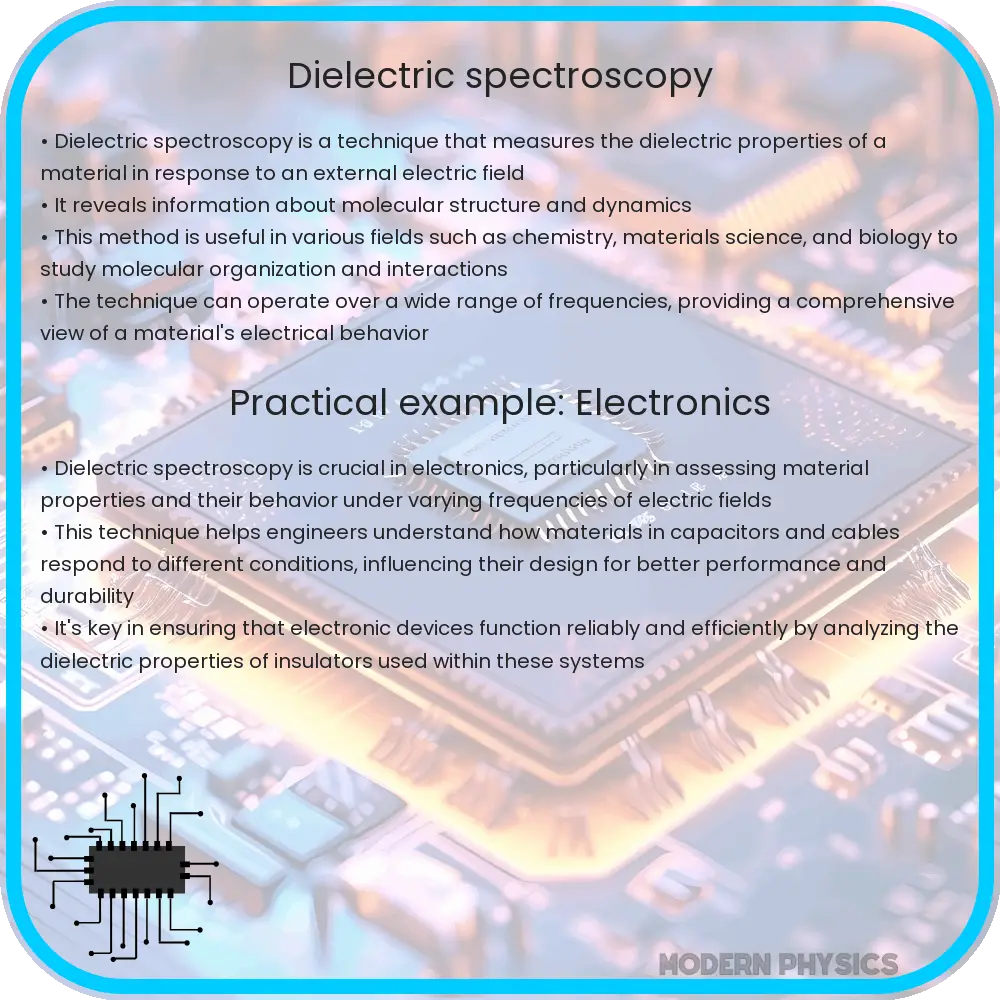Explore dielectric spectroscopy’s precision, applications, and theory, with insights into its role in material science and future advancements.

Understanding Dielectric Spectroscopy: Precision, Application, and Theory
Dielectric spectroscopy, a powerful analytical tool in material science, measures the dielectric properties of a medium as a function of frequency. This technique provides crucial insights into the molecular dynamics and interactions within various materials, making it indispensable in both research and industry applications.
Precision in Dielectric Spectroscopy
The precision of dielectric spectroscopy hinges on several factors. Key among them is the frequency range, which typically spans from a few Hz to GHz. This broad range allows for the analysis of diverse dielectric behaviors, from dipolar relaxation to ionic conductivity. Additionally, temperature control is vital, as dielectric properties are temperature-dependent. Precision instruments maintain a consistent temperature, often ranging from cryogenic to several hundred degrees Celsius, ensuring accurate and reproducible results.
Applications of Dielectric Spectroscopy
The applications of dielectric spectroscopy are vast and varied. In the pharmaceutical industry, it aids in understanding the stability and composition of drug formulations. Polymers, both synthetic and natural, are routinely analyzed for their dielectric properties to assess their suitability in various applications, such as in insulation materials. Dielectric spectroscopy also plays a crucial role in the food industry, where it helps in moisture content determination, a key factor in shelf-life and quality control.
Theoretical Foundations
At its core, dielectric spectroscopy revolves around the dielectric constant (ε) and dielectric loss (ε’). The dielectric constant, a dimensionless number, represents the material’s ability to store electrical energy. On the other hand, dielectric loss quantifies the energy dissipated as heat. The complex permittivity, ε* = ε’ – iε”, where i is the imaginary unit, combines these two aspects, providing a comprehensive picture of the material’s dielectric behavior. The theory also involves understanding the mechanisms of polarization, including dipolar, ionic, and electronic polarization, each dominant at different frequency ranges.
In summary, dielectric spectroscopy serves as a crucial tool in material characterization, offering precision, diverse applications, and a solid theoretical foundation. Its capability to provide detailed insights into the molecular dynamics of materials makes it invaluable in various scientific and industrial fields.
Advancements in Dielectric Spectroscopy Techniques
Recent advancements in dielectric spectroscopy have focused on enhancing its sensitivity and resolution. Techniques like broadband dielectric spectroscopy (BDS) allow for a detailed analysis over a wide frequency range, revealing complex relaxation processes in materials. Another significant development is the use of microelectrode technology, which has improved the measurement accuracy, especially in samples with low dielectric properties.
Dielectric Spectroscopy in Novel Research Areas
Dielectric spectroscopy is increasingly being applied in novel research areas. In biomedical engineering, it’s used for studying the dielectric properties of biological tissues, which can aid in disease diagnosis and treatment planning. In environmental science, it helps in assessing soil and water quality by analyzing their dielectric properties, crucial for environmental monitoring and remediation efforts.
Challenges and Future Directions
Despite its widespread use, dielectric spectroscopy faces challenges, particularly in the interpretation of complex data and the need for high-end, expensive instrumentation. Future directions in this field may involve the development of more user-friendly and cost-effective devices, as well as enhanced computational methods for data analysis. Integrating machine learning and AI could revolutionize how data from dielectric spectroscopy is interpreted, enabling more precise and predictive modeling of material behavior.
Conclusion
Dielectric spectroscopy stands as a testament to the intersection of science and technology, offering precise measurements and a broad spectrum of applications, from industrial to biomedical fields. Its advancement continues to evolve, driven by the need for more sophisticated and accurate material analysis. The integration of new technologies and computational methods is poised to further expand its capabilities, making it an even more essential tool in material science and related disciplines. As we move forward, the potential of dielectric spectroscopy to contribute to groundbreaking discoveries and innovations in various sectors remains vast and largely untapped, promising exciting developments in the years to come.
